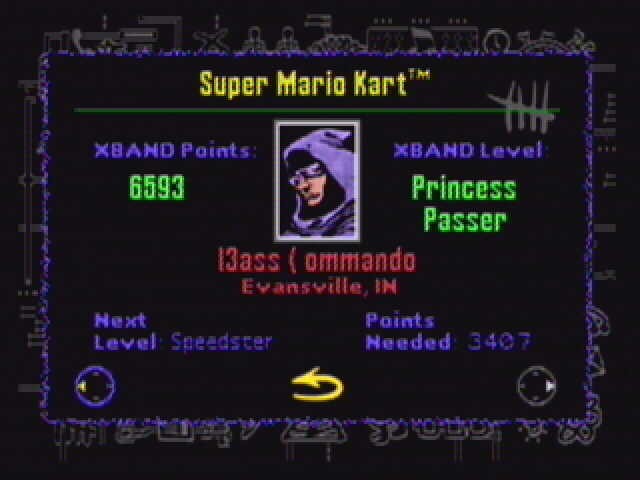While not technically a game, the XBand modem was certainly a unique piece of hardware that deserves recognition.
The XBand itself was a large purple cartridge that stuck out of your Super NES by about twice the amount that a regular cartridge did, and you put a game on the top of it, creating an impressive tower of plastic. Once you turned on the system, you had several options at your disposal: a buddy list, newsletters, email, and a matchup service, plus several more sundry activities that I’m not going to go into here.

The feature that I used most frequently was the game matchup feature. You could choose to search for an opponent either in your local calling area or nationwide. If there was an opponent waiting to play someone in the same game you were seeking with, then your SNES would dial up their SNES, you would connect, and play would begin. Sure, that doesn’t sound too impressive now, but this was before most people had even heard of the Internet, much less had access to it outside of their local library. The system, it should be noted, did not use the Internet at all, but rather directly dialed your opponent. This was fairly important as it helped reduce latency (the time between when you press the buttons and when it appears on the screen), but caused two big problems in my house:
- When I was in the queue, folks would dial my number to play. If I didn’t tell everyone in the house what I was doing, there was a near 100% chance that someone would answer the phone, completely screwing up the connection.
- While dialing out, I could disable call waiting by prepending a sequence of numbers to my dial-out number. This was fine unless I had to wait on a call. When someone called me, I had no way to disable call-waiting. This meant that inevitably someone would call, there would be beeps on the line, and I would get disconnected
Each match you won gave you a certain amount of points, these points weren’t really for anything except for giving you some meaningless ranking on your profile screen that only you could see. Unless, that is, you had access to the Internet. The site, which is now long-defunct, allowed you to look up players by name and see their stats. It was pretty bare-bones, but pretty useful for seeing if the person that trounced you in Game X was a veteran or just getting started.

There was a fair selection of games supported by the service, though the only ones I ever played were Super Mario Kart, Kirby’s Avalanche, Killer Instinct, and Super Street Fighter II. There were also several sports games like Ken Griffey Jr. Presents Major League Baseball and NBA Jam, but I couldn’t imagine tying up the phone line for the length of time it would take to complete just one matchup in those games. Late in the life of the service, support for Super Mario World and Legend of Zelda A Link to the Past was added, though neither allowed you to play the games. Mario let you dial up a random user and chat with them with the built in chat interface (think Instant Messenger with only one person available at a time), and Zelda allowed you to compete with someone else in a silly maze game. These late additions, in hindsight, were probably meant to bolster the use of the system.
Even at its peak, which is right about when I joined, I had trouble finding people to play with. There were virtually no other players in my local area, there were two other then the three I made buy one, and searching nationwide took upwards of 10 minutes to find an opponent, if I could find one at all. After a couple years, the service tanked and the company was absorbed by MPlayer, who was, in turn absorbed by GameSpy. The system was immediately shut down, and now exists only in the memories of those that played it. If you look hard enough, though, you’ll find the occasional player whose eyes will light up at the mention of the ground-breaking service.

